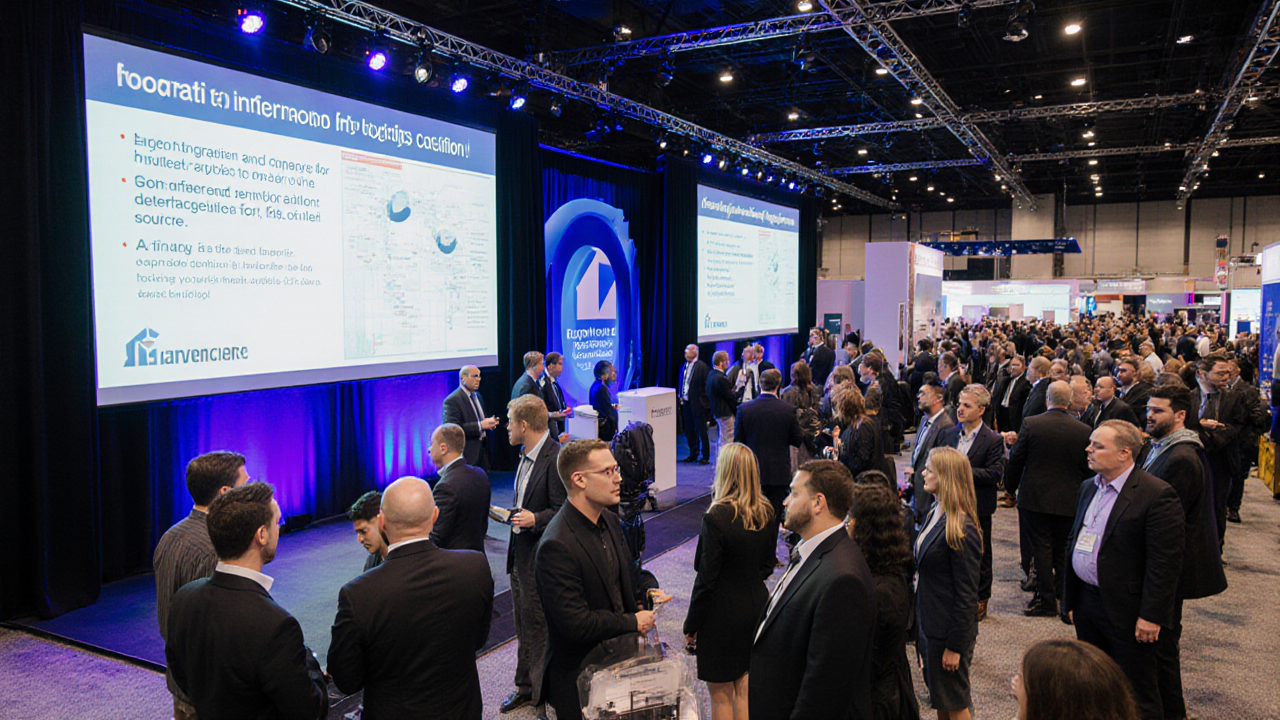
The 2025 industry conference has quickly become a pivotal gathering where logistics innovators, technology pioneers, and thought leaders converge to shape the future of supply chain operations. At its heart, the event showcases how collaboration between leading providers, emerging startups, and academic partners can unlock new efficiencies, drive sustainability, and foster a vibrant community of practice. For senior supply‑chain executives, the conference offers a rare window into the strategies that are redefining how goods move from origin to destination in an increasingly digital world.
Why This Matters for Your Supply Chain
Sponsors and partners bring more than capital to the conference; they infuse it with world‑class expertise, bold innovation, and a shared commitment to community. Their involvement demonstrates that the most successful supply‑chain transformations are achieved through partnership rather than isolation. By aligning with technology leaders and data specialists, companies can accelerate the adoption of AI‑powered analytics, which industry studies show can reduce operational costs by up to 30% while simultaneously improving delivery accuracy and customer satisfaction.
Monday, October 27 – Space Stage
The opening day features a showcase of aerospace startups tackling the most complex challenges in space exploration, orbital intelligence, and infrastructure. AI is at the core of these innovations, enabling autonomous decision‑making and real‑time data processing that could translate to ground‑based logistics through predictive maintenance and adaptive routing. The session underscores how the same principles of data‑driven autonomy that power satellites can be leveraged to create resilient, scalable supply‑chain networks that respond to disruptions with minimal lag.
Builders Stage – Aviation Innovation
A session titled “Flying into the Future: AI Is Fueling Aviation” highlights how automation is accelerating safety certification, streamlining design processes, and enhancing customer support. The example of a new aircraft model that received regulatory approval after integrating AI‑based simulation and predictive analytics illustrates a broader trend: when logistics providers embed AI into product development, they can cut time‑to‑market by 25% and improve reliability across the fleet. This shift is a clear signal for supply‑chain leaders that investing in AI‑enhanced design tools is not optional but essential for maintaining competitive advantage.
AI at the Edge – Space and Beyond
The “AI at the Edge” session dives into how space missions are now driven by onboard intelligence that processes data in real time, enabling autonomy and resilience. For logistics, the lesson is that edge computing—processing data closer to the source—can dramatically reduce latency in inventory management and shipment tracking. By deploying AI at the edge, companies can achieve near‑real‑time visibility, a critical factor for meeting the growing demand for fast, reliable delivery in e‑commerce and global trade.
Tuesday, October 28 – Product Strategy in the AI Age
A discussion on “Designing Products for the AI Age” brings together product leaders and venture capitalists to explore how AI reshapes user experience and operational workflows. The insights emphasize that product strategy must now account for AI’s ability to personalize service, predict demand, and automate routine tasks. For supply‑chain professionals, this means rethinking the design of logistics platforms to incorporate adaptive algorithms that can learn from each shipment and continuously optimize routing and inventory levels.
AI Stage – From Web Pages to Autonomous Agents
The “From Web Pages to Autonomous Agents” session focuses on building a future‑proof data stack that supports AI‑powered chatbots and autonomous decision systems. The emphasis on scale, speed, and regulatory compliance is directly relevant to supply‑chain executives who must integrate third‑party data sources while ensuring data privacy and compliance with global trade regulations. By adopting a modular, API‑centric architecture, companies can rapidly deploy autonomous agents that negotiate freight rates, manage customs documentation, and respond to market changes in seconds.
Networking and Community Building
The conference’s networking events—ranging from a cocktail reception that explores AI and cloud integration to a breakfast focused on women driving AI innovation—highlight the importance of community in driving industry progress. These gatherings provide a platform for cross‑sector dialogue, allowing supply‑chain leaders to share best practices, discuss regulatory challenges, and identify new partnership opportunities that can accelerate digital transformation.
Marketing and Thought Leadership Partners
A broad coalition of marketing and thought‑leadership partners amplifies the reach of the conference, ensuring that the insights generated reach a global audience of supply‑chain professionals. By leveraging content syndication, webinars, and industry reports, these partners help translate conference discussions into actionable strategies that can be implemented across diverse operational contexts—from small‑to‑medium enterprises to multinational conglomerates.
The Impact of Strategic Partnerships
The conference’s success is a testament to the power of strategic alliances. Whether it is a leading logistics provider partnering with a cloud platform to deliver real‑time visibility or a technology incubator collaborating with a major e‑commerce company to test autonomous delivery solutions, the collective effort drives innovation that benefits the entire supply‑chain ecosystem. For executives, the takeaway is clear: building a network of partners that span technology, data, and operational expertise is essential for achieving long‑term resilience and sustainability.
Closing Thought
As the 2025 conference concludes, the overarching message for supply‑chain leaders is that the future of logistics lies at the intersection of AI, data, and collaboration. By embracing these forces and fostering partnerships that span the technology stack, companies can unlock efficiencies, reduce costs, and deliver unprecedented value to customers worldwide. The insights shared at this event will undoubtedly shape the strategies of forward‑thinking supply‑chain professionals for years to come.
Loading comments...